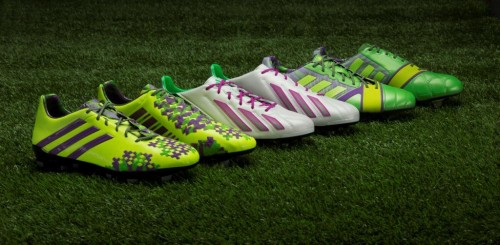Soccer has never been more physically taxing, and many professionals cope with sore and achy muscles. Contrary to popular belief, soreness is neither the result of lactic acid buildup, nor is a healthy afterglow. In fact, it can also be downright agony, a factor which impedes top performance. On the brighter note, there are some simple and easy, yet highly effective, techniques to deal with this soreness.
A recovery project
After each match or practice, players undergo a phase of recovery, which is an integral part of sports success. It includes hydrotherapy tubes, electronic stimulation, massage, carbohydrate drinks, etc. The chief goal is to keep delayed-onset muscle soreness in check. Alas, these methods do not always prove to be fruitful.
That is when self-care comes in to save the day, as it goes a long way in preventing this nuisance. The important thing is to cool down after a session, in order to enhance the repair process: a 15-minute walk, bike ride, or an easy jog is a great way to pull this off. Note that it is possible to benefit from products such as medical-grade Doyle’s Physio heating pads, which utilize moist heat and infrared technology to ease muscle pain and soreness.
Group by group
Let us start with the feet. Take a baseball or an object such as a can of shaving cream, and roll it under your feet. Then, apply pressure to sore spots and persist until the soreness wears off. Follow this up with a nice stretch and you should be able to make a real difference. Furthermore, calves are an area that is particularly important, because it aids in treating the feet and hamstrings.
This time around, utilize a rolling pin to roll the muscles. Then, conduct some “pin and stretch”: flex the muscles, squeeze them so that you recruit the fibers, and lastly, stretch them out. Bear in mind that this is a massage therapy technique, which should not be performed on torn and injured muscles. Next, it is time to address the hamstrings.
As a general rule of thumb, they are tackled before the quads. Again, we are executing a combination of rolling and stretching, and there is not much else we can do, especially if the hip flexors are tight. Quads call for a similar strategy of stretching, rolling, as well as pinning and stretching. Additionally, you can take advantage of cross-fiber friction, another massage method which involves a whole lot of rubbing.
As for the glutes, these muscles can be pretty tough and are not easy to cramp or spasm. Sometimes they are over-tight, however, and this leads to postural deviations with the dominant leg. Hence, it is a good idea to take extra time when stretching the glutes and straightening your legs. Finally, the hip flexors are a group which does not get enough attention, yet are crucial in decreasing the stress on the tight hamstrings.
It is worth noting that massages can be used to treat virtually any muscle group, boost performance, and alleviate pain. Yoga is also an excellent practice if you want to extend range of motion, preserve good health, and minimize the risk of injury. Lastly, build a healthy lifestyle, get plenty of sleep and rest, and you should be able to gain an edge in the sports arena and kick your game into overdrive.
On the right tracks
Even without a trainer at your side and tech marvels to help you, there are simple tactics to combat the annoying soreness and stay on the right track. Warm up and stretch your muscles and embrace a holistic approach. Relieve the pain from your feet to the hip flexors and steer away from any roadblock on the path to glory. There is no need to let soreness hold you back from peak performance and hider top-notch accomplishments.




